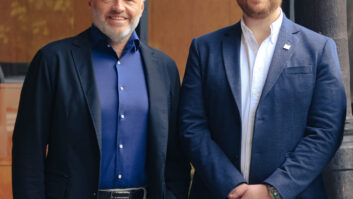
The term “leadership” is bantered about at every business conference with numerous philosophies discussed and promoted. Some rely on the tried-and-true disciplines fostered during the industrial revolution, while others are exploring the latest insights from the Harvard or Wharton Business Schools. I have never been able to settle on one over-arching collection of beliefs on the topic. The subject is too diverse and complex. Instead I am constantly on the lookout for specific elements that improve or replace those I currently employ. This month’s selection is a perfect example.
Language is more than just a communication vehicle for me. It is a hobby, a fascination, a palette from which I am able to paint verbal images. A tool to deliver emotional treatises to audiences both in person and in print. The power of language is inestimable. In the hands of the right person it can provide incredible illumination, become a direct force of influence, and inspire tremendous creativity and motivation.
David Marquet, a top graduate of the U.S. Naval Academy, commanded the nuclear-powered, fast-attack submarine USS Santa Fe from 1999 to 2001. After 28 years of naval service he began a career as a leadership consultant and authored Turn the Ship Around, a true story of turning followers into leaders. Leadership Is Language, his second book, is focused on communication strategies that will not only improve your own leadership capabilities, but also empower your team to make better decisions and take greater ownership of their individual positions within the company.
What exactly does the title mean? Marquet explains that many professions require people to work with their hands. Leadership, by its very nature, requires the individual to use words as the principle point of interface. Be it by email, text, phone, or face-to-face, the words you choose will dramatically affect the results you achieve. He states, “The magic of leadership is that, by changing your words, you will change the world around you because if you ask a question a different way, you’ll get a different answer.”
Marquet is against the old style of “command and follow” leadership as it is outdated and often ineffective. His intent is to create a more collaborative approach in which buy-in from subordinates is created through a thorough understanding of objectives through the eyes of others and not the leader alone.
This process is dependent upon a more even “share of voice.” Marquet posits that, in most organizations, leaders tend to talk the most. He says, “As a leader, you don’t need to say a lot because you already know what you think and when you start talking you’re anchoring the group. Basically, the idea is you’re bringing them to your way of thinking, which is what you think you want to do, but it’s actually not. What you want to do is understand how they think and what they think, and, at the end, you can decide what to do, whether you could do what they wanna do or what you wanna do, that’s fine. But it’s after uncovering what everybody thinks.”
He condenses the process into six plays:
- Control the clock, don’t obey the clock — Pre-plan decision points and give your people the tools they need to hit pause on a plan of action if they notice something wrong.
- Collaborate, don’t coerce — As the leader, you should be the last one to offer your opinion.
- Commit, don’t comply — Rather than expect your team to comply with specific directions, explain your overall goals and get their commitment to achieving it one piece at a time.
- Complete, not continue — If every day feels like a repetition of the last, you’re doing something wrong.
- Improve, don’t prove — Ask your people to improve on plans and processes, rather than prove that they can meet fixed goals or deadlines.
- Connect, don’t conform — Flatten hierarchies in your organization and connect with your people to encourage them to contribute to decision-making
The specific examples in the book drive these points home. The unfortunate sinking of the massive freighter, El Faro, in September of 2015 is documented in the first chapter. Decisions made by the captain resulted in the ship heading directly into the path of hurricane Joaquin. A few hours later the 790-foot ship went to the bottom with all hands onboard.
Interestingly, the majority of onboard communications were recorded and documented. It gives us a unique view of how the leadership structure led to the disaster. Marquet outlines the lack of collaboration and a substantial authoritarian structure that squelched input from qualified crew members that could have averted the loss of life and property. The captain had made a decision, a bad one, and simply would not change his mind.
If you are intent on advancing your own leadership abilities and having a more collaborative relationship with your team, I highly recommend you take advantage of this read.
Check out all the titles in Dave Donald’s Business Book Club.







